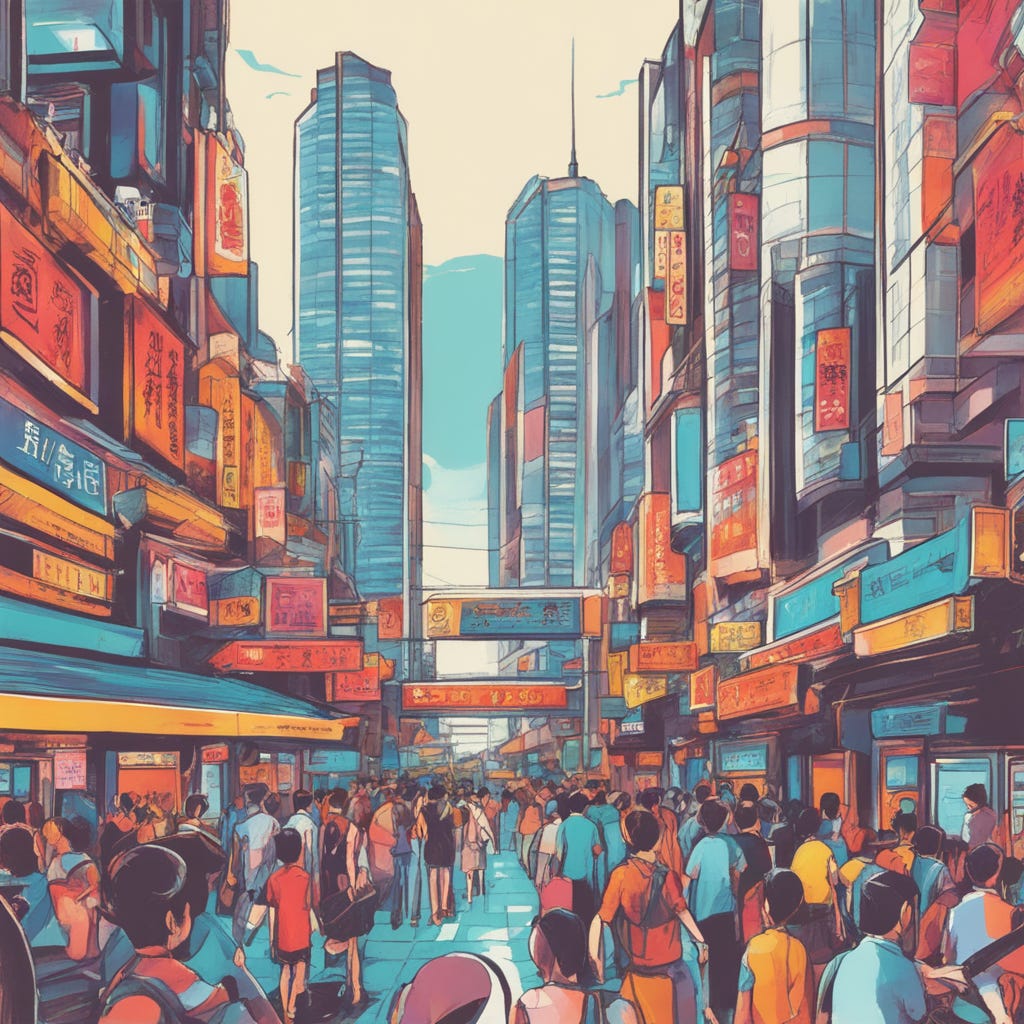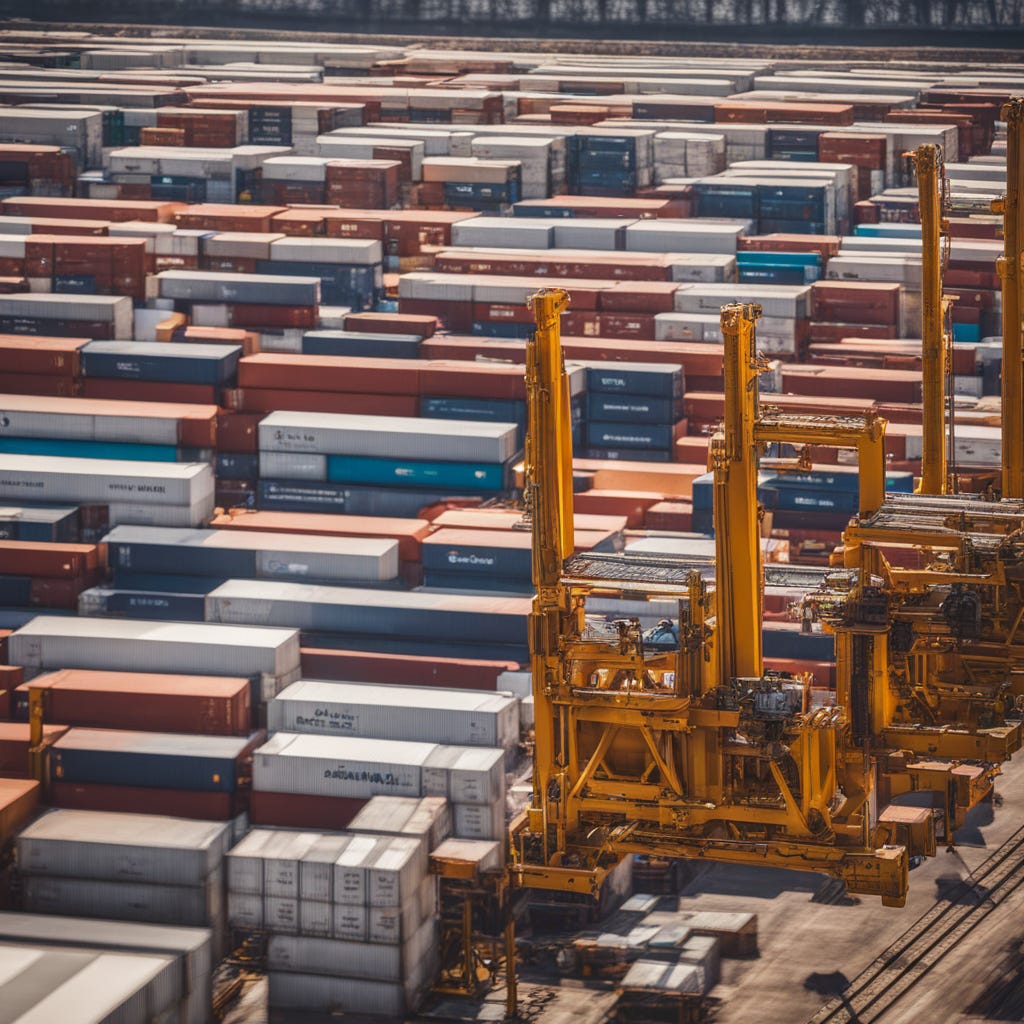Xi and Biden meet in San Francisco BoP Brief #8
Sanchez became Spanish President, how Shenzhen is adapting to China's economic slowdown, and the impact of decoupling in the maritime industry.
Xi and Biden met in San Francisco during the APEC summit to make the “new Cold War” colder.
With multiple geopolitical hot points around the world, some distension between China and the US will be welcomed by many and seems the only appropriate thing that Biden and Xi can get out of this meeting.
Xi and Biden can go home happy.
Biden gets a military crisis line, an AI guardrails working group, and an agreement to crack down on fentanyl.
Xi gets to meet US CEOs and encourage them to invest in China to ease the country’s economic uncertainty.
This is overall a symbolic gesture, but symbolism matters, as Wu Xinbo, the director of Fudan University’s Institute of International Studies and the Centre for American Studies, said in a speech weeks before the meeting translated by Thomas des Garets Geddes in Sinification:
Wu calls Xi’s then-potential meeting with Biden “extremely symbolic” (极有象征性), but describes the current easing of tensions between China and the US as no more than “détente” (缓和) or a stabilising of relations, rather than an actual “improvement” (改善).
A shift in China-US relations?
This is not the end of China-US geopolitical tension.
In San Francisco, we didn’t witness a reboot in China-US relations, but more a way to find and manage incompatibilities without falling into an on-all conflict.
One of the main differences between the old Cold War and the new one – if we can even call it that – is that China and the US have strong economic interdependence and interlinked supply chains.
This has both positive and negative aspects:
The positive aspect is that a war would be very difficult to sustain for either economy. This scenario differs from the MAD – which may also apply in a prospective China-US war. It is not that war would be highly mutually destructive; it is that both economies would have to reorganize to be able to wage it.
The negative aspect of economic interdependence creates constant friction connected with geopolitical tensions and generates many more avenues of conflict and animosity. Also, the US is in a weaker position due to its massive policies of delocalization to China.
In other words, the situation is far messier, and agreements on arms control won’t help stabilize the relationship.
There are attempts on both sides to correct the mutual dependence on this relation. Both countries will keep reinforcing their economic capabilities, and their mutual reliance will decrease – which could even be good for easing tensions. So far, neither side has yet gotten there, although the tendency seems clear.
Said that this is the first moment of rapprochement in the last six years. Learning how to manage their incompatibilities is part of the evolution of China-US relations, so any developments in this field should be welcomed.
Bottom line:
Washington and Beijing must be much more creative to find a sustainable way to manage their rivalry. A more balanced relationship will likely need China and the US to be less entangled but not so disentangled that they could afford to destroy the other.
Shifting waves in the shipping industry?
Danish container shipping company Maersk will cut more than 10,000 jobs due to the financial downturn in the third quarter of 2023.
Maersk plans to decrease the workforce further by 3,500 positions, with up to 2,500 to be carried out in the coming months and the remaining extending into 2024.
This reduction will bring the global workforce below 100,000 positions, with an expected restructuring charge of US$350 million.
Maersk aims to reduce selling, general, and administrative expenses (SG&A) cost by US$600 million for 2024.
Is this an indicator of a global trade slowdown or a change in the major trading routes?
According to Fortis Analysis on Twitter, today, the two most significant container trade routes are those connecting China to the United States and China to Europe.
For the past three decades, major shipping companies have structured their networks and capacity projections based on a model where China remains the factory of the world.
Now, this is changing, with strong shifts in the global economic landscape; thanks to re-shoring and near-shoring practices, there might be new routes that focus on transatlantic trade or the Indian Ocean.
We are still far from a finalized process, but it is always important to pay attention to the shipping industry.
Shipping is the bloodstream of global trade.
How is Shenzhen adapting to Xi’s China?
In this piece for World Politic Review, I talk about how Shenzhen is adapting to China’s economic slowdown and the end of the Reform and the Opening Up.
Like the country at large, the city of Shenzhen is also looking for ways to adapt to the growing uncertainty of China’s shifting economic landscape. But Shenzhen is not just another city. It was the birthplace of the Reform and Opening Up era, which President Xi Jinping has essentially brought to a close. Chosen for its geographic proximity to Hong Kong and its sea-fearing and merchant tradition, Shenzhen became the first Special Economic Zone where market initiatives flourished in post-Mao China. The city rapidly grew from 300,000 inhabitants in 1979 to 13 million today, attracting talent and dreamers from around China.
In the article, I have researched the strategies that the city is implementing to finds its new space in Xi’s China: identity consolidation, regional integration and internationalization.
Sanchez survives again
In the first installment of this newsletter, I talked about July’s Spanish elections, and I already anticipated that Pedro Sanchez was likely to become Spain’s PM with the votes of Junts.
Finally, today, it happened.
The fact that Sanchez got Junts votes offering an amnesty law for Puigdemont hasn’t set well in the opposition, and there have been protests for almost two weeks in Madrid and other Spanish cities.
In this quick take I wrote for Unherd, I thought that the protest would keep growing, even amassing enough support to provoke something akin to the Spanish version of January 6th.
However, although the protest continued and may continue for a few days, they seem that have already burned out before they could expand.
The fact is that Sanchez, liked or not, has the numbers in Congress, and there is not much that can be done by the opposition apart from trying to fight the amnesty bill through institutional means.
For external observers, it seems like Spain was on the verge of a new civil war. But this is something actually pretty common in Spain before the formation of a new government.
Sanchez knows that the tone of the protest hasn’t done anything more than reinforce him and force Vox and the PP to compete with each other. Sanchez felt so comfortable and unafraid that spent half of the vote in Congress making fun of Feijoo.
My piece of advice is that while he is still around, in Spanish politics, do not bet against Pedro Sanchez.
This week’s long-read: How much “decoupling” has been really decoupled?
Nonetheless, we are still far from a full decoupling between China and America’s supply chains. This week’s long-read is a paper written by Richard Baldwin, Rebecca Freeman, and Angelos Theodorakopoulos for the National Bureau of Economic Research, that examines three core elements of these problems: measurement of links exposing supply chains to disruptions, the nature of shocks causing disruptions, and criteria for policy to mitigate their impact.
Here are some of its conclusions:
Global input-output data reveals that US exposure to foreign suppliers, particularly China, is larger than conventional trade data suggest.
However, overall exposure at the macro level remains relatively modest, with over 80% of US industrial inputs sourced domestically.
Recent supply chain shocks have been systemic rather than idiosyncratic, likely arising from climate change, geoeconomic tensions, and digital disruptions.
The focus of concerns and policies should be on individual products rather than the entire manufacturing sector.
This is all for this week. As always, feel free to reach out or leave a comment if there is anything here you would like to talk about.
Miquel







